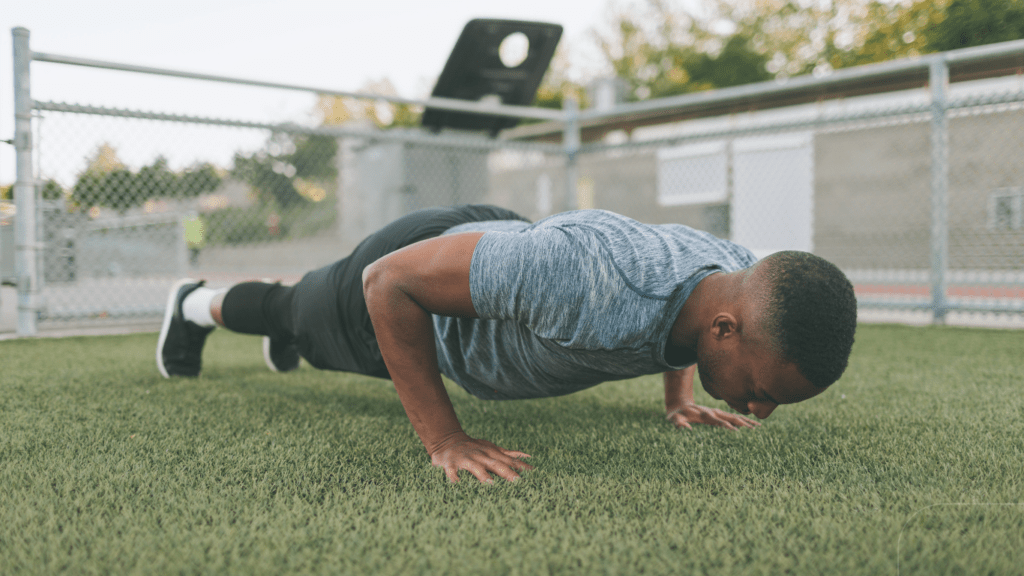Introduction
Visualization isn’t woo-woo. It’s mental prep done right—structured, intentional, and grounded in sports psychology. At its core, visualization is the practice of mentally rehearsing plays, moves, and responses before they happen. It’s a way to train the brain like a muscle—repeating patterns until they become instinct.
More and more elite footballers are turning to mental tools like visualization to stay ahead. Physical training has its limits. So when everyone’s fit, fast, and strong, what separates the best from the rest? Focus. Confidence. The ability to stay calm under pressure. That’s where mental imagery makes a real difference.
Studies show that simulating performance in the mind activates many of the same neural pathways as doing it for real. Visualizing that penalty kick, that one-touch pass under pressure, or even the moment before stepping onto the pitch—these mental reps stack up. Over time, they translate into faster decisions, sharper focus, and better outcomes on game day.
It’s not a shortcut. It’s work. But it’s work that works.
What is Visualization, Exactly?
In football, visualization isn’t some vague, new-age idea. It’s mental rehearsal—training your brain to run through plays, techniques, and tough calls before they happen. Players close their eyes and walk through a free kick, a press break, a rebound recovery. Every detail counts: body position, timing, emotional state, even the noise of the crowd.
This isn’t passive daydreaming. It’s focused, deliberate, and structured. Think of it like replaying game film in your head, but with you as both the player and the coach. The best athletes are using it to stay sharp, calm, and ready for whatever the game throws at them.
Science backs it up. Sports psychologists and neuroscientists have shown that visualizing an action activates nearly the same neural pathways as physically performing it. That means useful reps without the risk of injury. Smarter training, not just harder training.
How Visualization Improves Performance on the Pitch

Visualization isn’t about pretending. It’s about locking in. When footballers close their eyes and walk through a pass, a shot, or a pressing pattern in their minds, the brain fires in ways that mirror real movement. This mental rehearsal fine-tunes muscle memory and reaction speed. It’s reps—minus the wear and tear on the body.
Confidence is another byproduct. By mentally placing yourself in high-pressure moments—taking a penalty in front of a roaring crowd, tracking back on a counter—you’re building familiarity. That way, when the pressure hits in real life, your mind’s already been there.
Tactically, visualization helps players run the game a few steps ahead. By mentally reviewing systems, options, and scenarios before stepping onto the field, you make smarter split-second decisions. It hardwires vision.
Last, focus. Visualization creates a mental bubble. Done well, it sharpens concentration and blocks out distractions, from stadium noise to distractions in your own head. That mental edge? It adds up.
Explore expert-backed visualization tips you can start using today
Building Mental Resilience With Visualization
Football isn’t just fast feet and sharp passes—it’s also a grind. Injuries, mistakes, slumps. These test your head more than your legs. That’s where visualization earns its keep.
Mentally running through worst-case scenarios—missing a penalty, losing possession, getting benched—actually helps players stay grounded when things don’t go to plan. It’s not pessimism. It’s preparation. Visualizing setbacks in advance allows players to respond, not react. Composure becomes muscle memory.
This kind of mental reps also builds long-haul endurance. The season’s full of ups and downs. Visualization helps players plug in emotionally—not spiral out. They get better at staying steady under pressure, blocking out noise, and keeping confidence intact.
Check out key tactics for boosting mental resilience in football
Implementing Visualization Into Your Routine
Like any habit that sticks, timing matters. The most effective moments for visualization are when your body and mind are already in a receptive state—pre-match, right after training, and during recovery days.
Before a game, mental imagery helps lock in focus and reduce nerves. Post-training, it reinforces what you just worked on, helping skills settle deeper. On recovery days, it’s a way to stay mentally connected to the game when your body’s resting.
To really make it count, pair your visualization with controlled breathing and light physical movements. That might mean doing a simple warm-up, then sitting down and running through game scenarios in your mind. Picture yourself receiving the ball, making a decision fast, finishing strong. Don’t just see it—hear the sounds, feel the pressure, smell the grass. The more senses you involve, the stronger the mental imprint.
This isn’t about zoning out. It’s intentional, purpose-driven replay. And just like physical training, the more often you do it, the sharper you get.
Final Takeaways
Visualization doesn’t cost a cent, but the payback can be massive. Top-tier footballers use it to dial in performance before a match, reframe pressure, and prep their brains like they prep their bodies. The thing is—it’s not just for the elite. Amateurs, weekend players, rising academy kids—everyone can tap into this tool.
Like any skill, it builds through steadiness. One session won’t make you Messi. But consistent reps—seeing each move, each decision, each response—tighten focus and build muscle memory without touching the ball. It’s not wishful thinking. It’s training the mind to lead the body.
The pros lean on it because it works. You can, too.

 Chelsea Haynes is a valued member of the Awesome Football Network team, where she excels as a skilled contributor and article writer. With a sharp eye for detail and a deep love for football, Chelsea produces compelling content that covers a diverse range of topics, including team dynamics, player performances, and game strategies. Her insightful articles are crafted to engage and inform readers, providing them with a deeper understanding of the sport.
Chelsea's expertise and dedication to football journalism enhance the quality of content at Awesome Football Network. Her contributions help keep the platform at the forefront of football news, ensuring that fans and professionals alike stay well-informed and connected to the latest developments in the world of football.
Chelsea Haynes is a valued member of the Awesome Football Network team, where she excels as a skilled contributor and article writer. With a sharp eye for detail and a deep love for football, Chelsea produces compelling content that covers a diverse range of topics, including team dynamics, player performances, and game strategies. Her insightful articles are crafted to engage and inform readers, providing them with a deeper understanding of the sport.
Chelsea's expertise and dedication to football journalism enhance the quality of content at Awesome Football Network. Her contributions help keep the platform at the forefront of football news, ensuring that fans and professionals alike stay well-informed and connected to the latest developments in the world of football.
